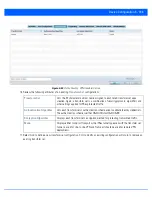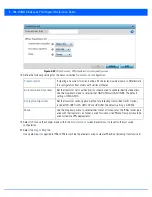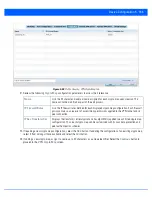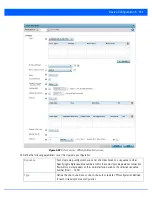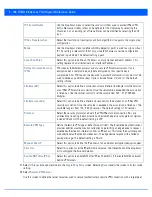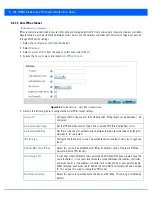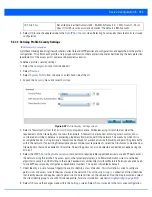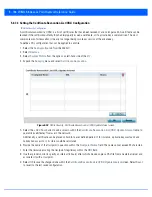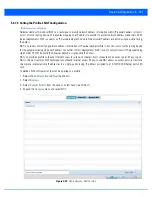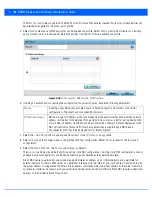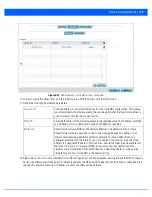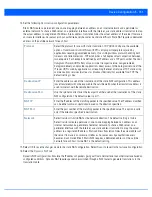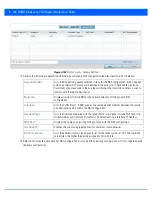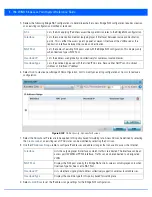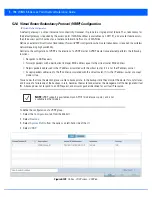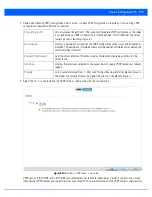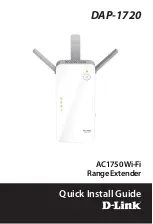
Device Configuration 5 - 147
5.2.7.5 Setting the Profile’s NAT Configuration
Profile Security Configuration
Network Address Translation
(NAT) is a technique to modify network address information within IP packet headers in transit
across a traffic routing device. This enables mapping one IP address to another to protect network address credentials. With
typical deployments, NAT is used as an IP masquerading technique to hide private IP addresses behind a single, public facing,
IP address.
NAT is a process of modifying network address information in IP packet headers while in transit across a traffic routing device
for the purpose of remapping one IP address to another. In most deployments, NAT is used in conjunction with IP masquerading
which hides RFC1918 private IP addresses behind a single public IP address.
NAT can provide a profile outbound Internet access to wired and wireless hosts connected to an access point. Many-to-one
NAT is the most common NAT technique for outbound Internet access. Many-to-one NAT allows an access point to translate
one or more internal private IP addresses to a single, public facing, IP address assigned to a 10/100/1000 Ethernet port or 3G
card.
To define a NAT configuration that can be applied to a profile:
1. Select the
Configuration
tab from the Web UI.
2. Select
Devices
.
3. Select
System Profile
from the options on left-hand side of the UI.
4. Expand the
Security
menu and select
NAT
.
Figure 5-95
Profile Security - NAT Pool tab
Summary of Contents for WiNG 5.6
Page 1: ...Motorola Solutions WiNG 5 6 ACCESS POINT SYSTEM REFERENCE GUIDE ...
Page 2: ......
Page 22: ...8 WiNG 5 6 Access Point System Reference Guide ...
Page 26: ...1 4 WiNG 5 6 Access Point System Reference Guide ...
Page 38: ...2 12 WiNG 5 6 Access Point System Reference Guide ...
Page 74: ...3 36 WiNG 5 6 Access Point System Reference Guide ...
Page 468: ...6 2 WiNG 5 6 Access Point System Reference Guide Figure 6 1 Configuration Wireless menu ...
Page 568: ...6 102 WiNG 5 6 Access Point System Reference Guide ...
Page 614: ...7 46 WiNG 5 6 Access Point System Reference Guide ...
Page 660: ...8 46 WiNG 5 6 Access Point System Reference Guide ...
Page 716: ...9 56 WiNG 5 6 Access Point System Reference Guide ...
Page 730: ...10 14 WiNG 5 6 Access Point System Reference Guide ...
Page 982: ...14 20 WiNG 5 6 Access Point System Reference Guide ...
Page 984: ...A 2 WiNG 5 6 Access Point System Reference Guide ...
Page 1046: ...B 62 WiNG 5 6 Access Point System Reference Guide ...
Page 1047: ......

